|
Here are a few of this week's stories from the Michigan Department of Natural Resources:?
See other news releases, Showcasing the DNR stories, photos and other resources at Michigan.gov/DNRPressRoom.
PHOTO FOLDER: Larger, higher-res versions of some of the images used in this email are available in this folder.

Have you seen fish stocking trucks on the road this spring? If not, chances are you soon will! Our stocking season is underway, and this time of year you?ll find DNR trucks releasing their prized cargo at hundreds of lakes and streams throughout the state.
Fish stocking is a valuable tool fisheries managers use for different reasons, including:
- Restoring ecosystem balance.
- Providing diverse fishing opportunities.
- Rehabilitating low fish populations.
- Reintroducing extirpated (locally extinct) species.
The DNR does not stock on top of wild populations when it can be avoided. Fish production staff members take great pride in the quality of the fish they produce, but when feasible prefer to rely on naturally reproducing fish that are adapted to their local ecosystem.
?Sometimes, the combination of angling pressure ? sustained fishing ? and habitat limitations in some areas will keep wild fish from maintaining the desired population level on their own,? said Aaron Switzer, DNR fish production manager. ?In those instances, we?ll stock hatchery fish to supplement natural reproduction.?
The DNR accomplishes this work by rearing fish at its six fish production facilities throughout the state, cooperatively managing up to 29 rearing ponds and six Great Lakes imprinting net pen/pond locations (which help developing fish return to spawning waters when mature) and maintaining a fleet of 17 specialized fish stocking vehicles.
DNR crews stock more than 20 million fish ? that's over 350 tons ? every year. Species include steelhead; lake sturgeon; Atlantic, Chinook and coho salmon; splake (a hybrid between lake trout and brook trout); and brown, brook, lake and rainbow trout, as well as muskellunge and walleye. Beginning in mid-March and ending in early June, DNR fish stocking trucks travel well over 100,000 miles to stock more than a thousand locations.
People often wonder where and why fish are stocked in a particular lake or stream ? in fact, it?s one of the DNR?s most frequently asked questions. Some of the determining factors include a body of water?s current habitat, available forage fish and the concentration of predators and/or competitors.
If you?d like to see whether fish have been stocked in your favorite spots, visit michigandnr.com/fishstock.
Questions? Contact Aaron Switzer at 231-383-2565.
|
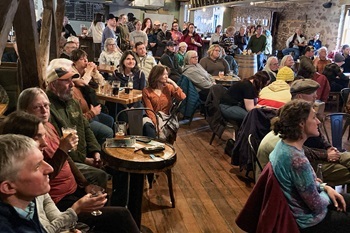
Birding in Michigan during spring migration is a big deal, with hundreds of species to search for, endless opportunities to catch sight of them and plenty of people who enjoy the chance to talk all things birds! Mark your calendar for two events coming up Thursday, April 18.
Birds & Brews in Marquette
If you?re up for a special evening of bird trivia, conversation about how public lands support birds and the chance to win a door prize ? all while enjoying a complimentary (alcoholic or nonalcoholic) drink ? join the Laughing Whitefish Bird Alliance and MI Birds at Birds & Brews, 7 p.m. at Ore Dock Brewing Company, 114 W. Spring St. in Marquette.
This is a family-friendly event, with coloring sheets and crayons provided. Door prizes include binoculars, a book on gardening for birds, and coffee and chocolate donated by local businesses. Registration is not required. We hope to see you there! (More than a hundred people attended the 2023 event, pictured above).
|
Woodcock Walk near Gladwin
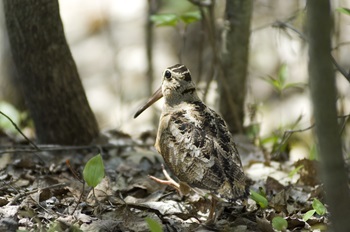
If an outdoor adventure is more your speed, head to the Lame Duck Foot Access Area near Gladwin, one of the DNR?s Grouse Enhancement Management Sites, for a guided Woodcock Walk led by DNR staff and partners from the Ruffed Grouse Society. This GEMS location is one of the best places to view male American woodcock doing their quirky spring mating dance.
About 15 miles northeast of Gladwin, the 11,000-acre Lame Duck Foot Access Area is the largest GEMS location in the state, providing a great mix of habitat in both Gladwin and Arenac counties. All ages are welcome to attend. Meet at 7:30 p.m. at the corner of Bowmanville Road and Lame Duck Truck Trail (44.098025, -84.236925).
Bring your own binoculars, if you have them, and a headlamp or flashlight. You also may want to download one or more of the following smartphone apps: eBird, iNaturalist, Merlin Bird ID or Audubon Bird Guide. Dress for the weather and wear sturdy shoes; we will walk along uneven ground that can sometimes be muddy. Be aware, too, that the trail system is not fully accessible according to Americans with Disabilities Act guidelines.
RSVP is required. Call 989-426-9205, ext. 2267630 for more information and to RSVP. If weather is poor, the rain date for this event is Thursday, April 25.
Both of these events are presented in partnership with MI Birds, a public outreach and education program created by Audubon Great Lakes and the Michigan DNR. MI Birds aims to deepen all Michiganders? engagement in the understanding, care and stewardship of public lands that are important for birds and local communities.
Questions about either event? Email [email protected].
|

The Michigan Natural Resources Commission will meet Thursday, April 11, in downtown Lansing. The meeting leads off with the Fisheries Committee and an update on Saginaw Bay's populations of walleye and yellow perch, followed by the Wildlife Committee and a report on chronic wasting disease monitoring and surveillance.
The meeting also will cover this year's Pure Michigan Hunt winners, falconry regulations, an update on the state?s deer management initiative, a legislative report and several land transactions.
The day starts at 9 a.m. at Lansing Community College's Downtown Campus, 600 North Grand Ave. in Lansing. See the draft meeting agenda and upcoming 2024 meeting dates at Michigan.gov/NRC.
For more information, email [email protected].
|
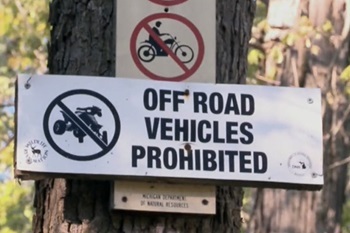
Set your DVR! A new episode of "Wardens" featuring the Michigan DNR is on the Outdoor Channel Friday, April 12, at 9 p.m.
This week's episode takes you on a ride-along during Memorial Day weekend ORV patrols and provides a look at how a new building construction technique called mass timber is being used for a new DNR office.
To get the Outdoor Channel, ask your local TV service provider or go to outdoorchannel.com, myoutdoortv.com or Amazon Prime Video, or call 855-44-OUTDOOR. More than 78 episodes of "Wardens" have featured Michigan and tallied over 36 million viewers!
Episodes air on the Outdoor Channel every Friday at 9 p.m. Previous episodes air on FOX UP/WLUC-TV6 every Sunday at 9:30 a.m. The show also is available under the title "Wardens of the North" or "Michigan Wardens" on Animal Planet.
Questions? Contact Dave Haupt at 517-420-0819.
|
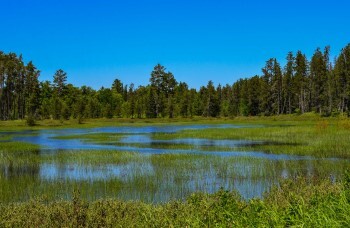
Three and a half years, nearly 9,800 individual parcels and more than 167,000 total acres comprehensively evaluated by dozens of staff from across its fisheries, wildlife, forestry, parks and recreation, finance and other program areas ? it?s all part of the DNR?s state land review that concluded in February with approval of final staff recommendations on which parcels to keep, swap or sell.
Just how much land are we talking about? Well, all that acreage adds up to roughly 261 square miles, or about the size of 70 Mackinac Islands! Still, it amounts to a review of just over 3.6% of all state-owned land managed by the DNR.
In case you missed it, a recent Showcasing the DNR feature digs into the mindset and methods ? some old and some new, such as GIS mapping and aerial imagery ? that contributed to the painstaking process of determining which lands best meet the DNR?s mission. Read the full story.
|
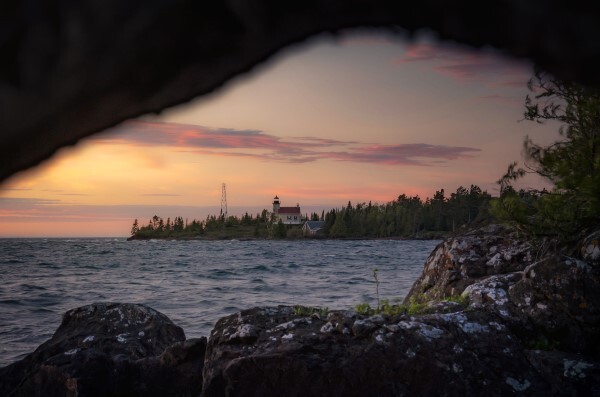 See more pictures by Michigan state parks photo ambassadors at Instagram.com/MiStateParks. For more on the program, call Stephanie Yancer at 989-274-6182. (This photo is by Marybeth Kiczenski, for the Michigan DNR, at Fort Wilkins Historic State Park in Keweenaw County.)
|